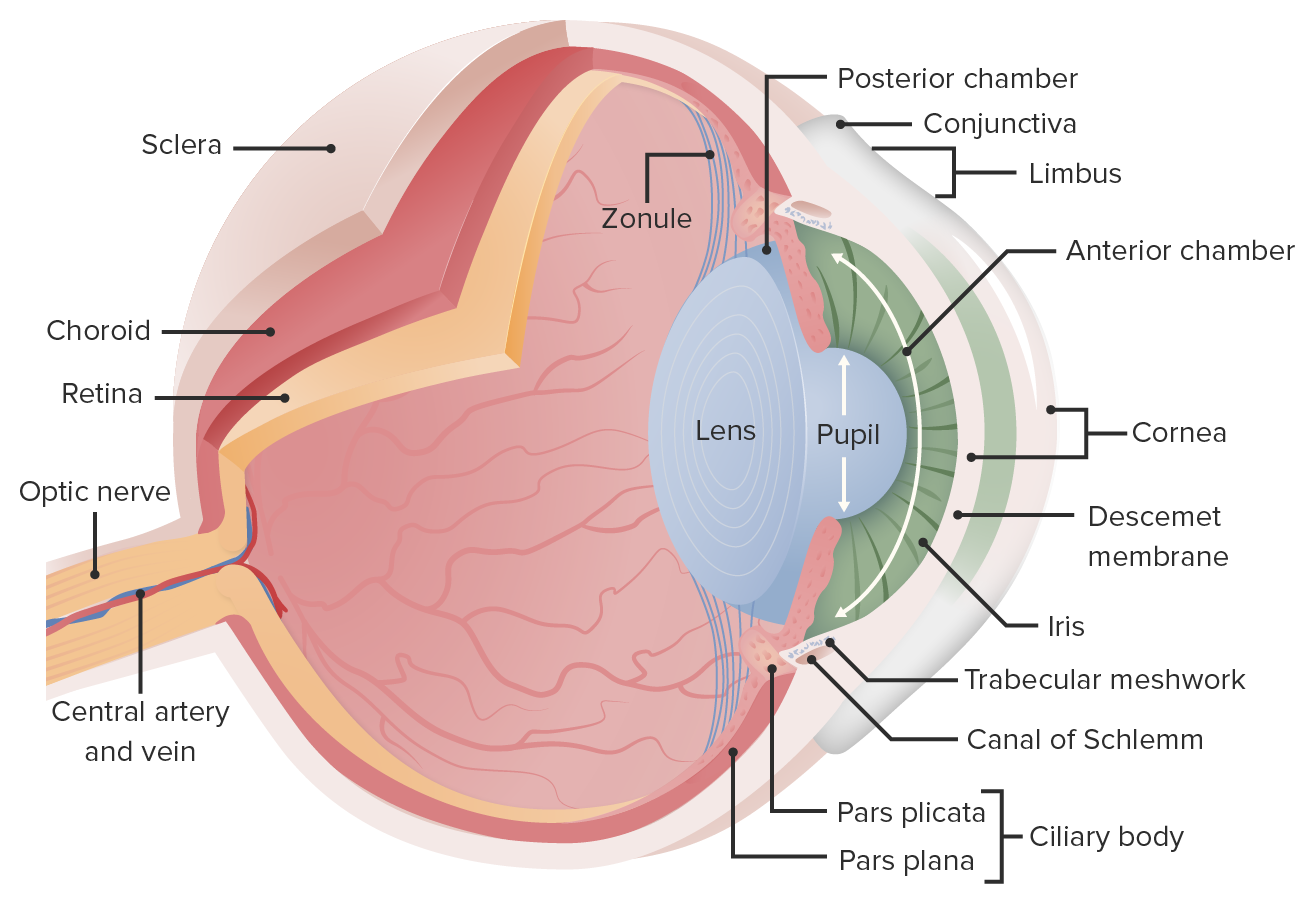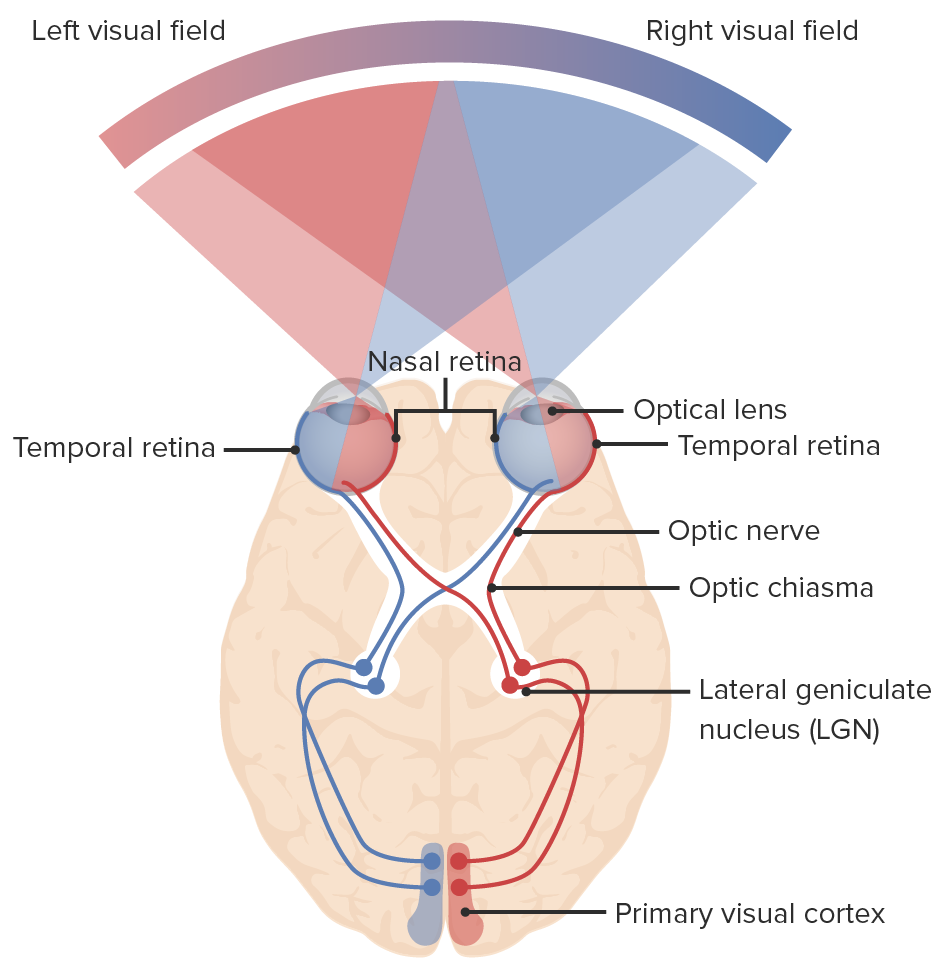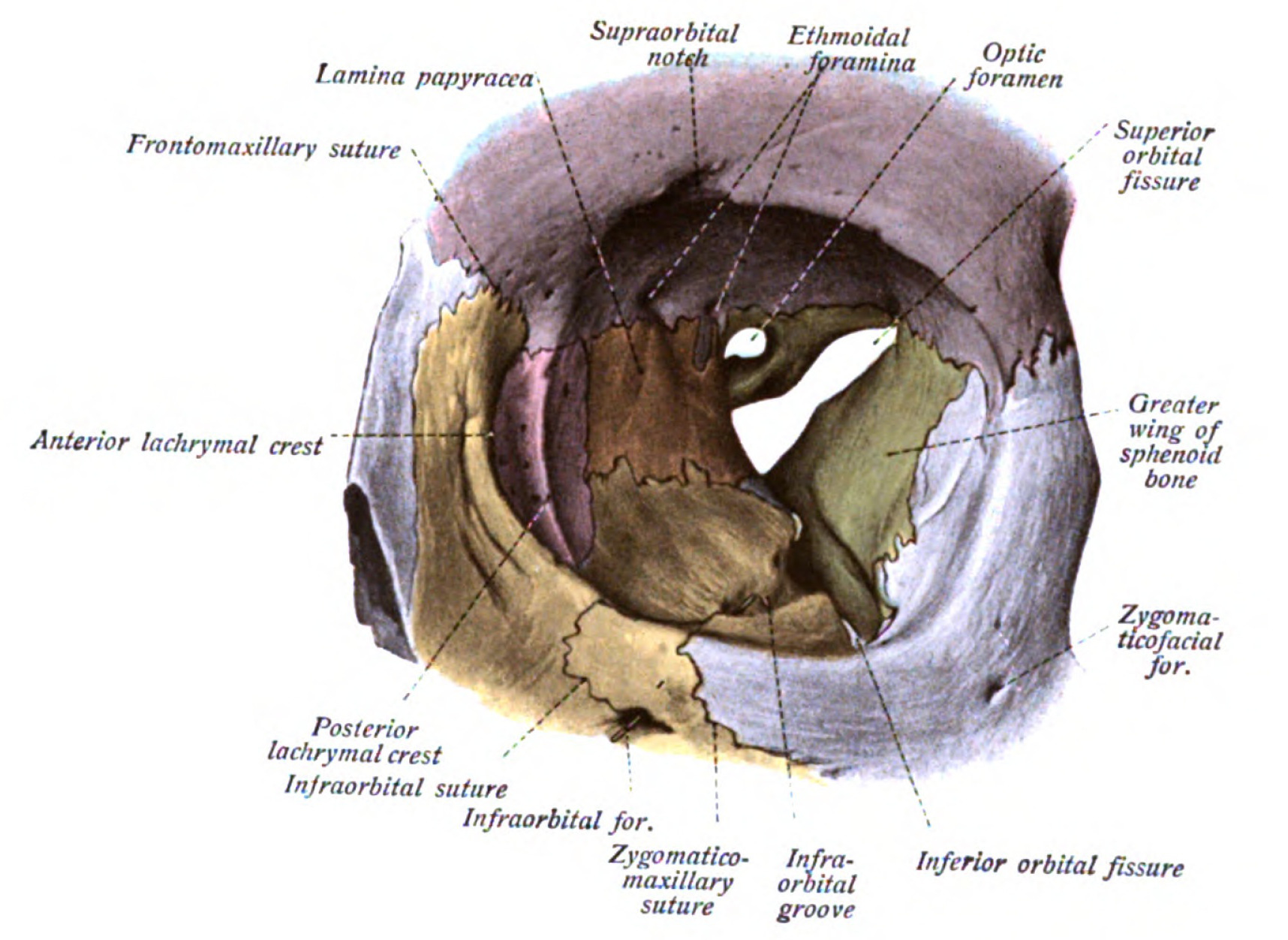Playlist
Show Playlist
Hide Playlist
Vision: Signal Termination and Convergence
-
Slides 02 Vision NervousSystem.pdf
-
Download Lecture Overview
00:00 How do you turn off the signal? It’s important process to be able to turn the signal on, as well as to turn the signal off. 00:10 So rhodopsin kinase and arrestin work together to fast for our lyse that opsin molecule and then keep it in that fast for related state. 00:22 The GTPase and cyclic GMP activating protein that changes the amount of cyclic GMP located within the molecule. 00:32 And remember, the amount of cyclic GMP is what regulates that sodium channel from opening and closing. 00:40 So to review this process one more time, let’s look at a photoreceptor cell. 00:47 And let’s look at how this changes occur during dark and light. 00:53 So during the dark, there is a high amount of cyclic GMP. 00:58 And therefore, this cyclic GMP-gated channels are open. 01:02 Therefore, it is sustained and they sometimes call this the dark current. 01:09 And the dark current is going to be something that you have to remember, it is active during the dark. 01:19 When you are suppose to light, that channel closes. 01:24 Cos remember you have a decrease in cyclic GMP which is gated to that sodium channel. 01:31 So when the light you get a hyperpolarization. 01:35 Okay? So remember, dark versus light activates these photoreceptors in a slightly different manner. 01:43 Now that we have talk through the process of rods. 01:49 Let’s now switch to cones and different wavelengths of light. 01:53 So rods are going to be responsive to just light but not to different colors of light. 02:00 Cones have the distinct responsibility of being able to sends color changes. 02:07 And it does that by different frequencies of light. 02:11 S cones, are in the more blue purple range. 02:15 M cones are in the green range. And then, L cones are in the red range. 02:21 So these cones work in the same manner as the rods. 02:26 Except for their excited by a little different frequency of light. 02:31 So their goal isn’t just to collect light but is to distinguish between the colors. 02:37 Signal Convergence. 02:39 How photoreceptor layers go through and convert is how you’re going to get a complete picture. 02:46 So here you can see that sometimes you have cones that are hook to a single bipolar cell which is then hook to ganglia cell. 02:56 And then, the ganglia will transmitted information eventually to the optic nerve. 03:01 If you want to though have very, very high distinguishing power, such as with a certain color or an acuity, you will have this hook up in a one to one relationship. 03:14 Otherwise, they’re hooked up in small photoreceptor fields. 03:19 Spots in the retina will be different, depending upon on how they are arrange. 03:25 Such as that in the phobia, you might have a nice one to one relationship between cones and bipolar cells. 03:31 In other parts, you might have a greater receptor field. 03:35 But in general, rods have a large receptor field and cones have a small receptor field. 03:42 Now, since you have three different neurons here in a row. 03:47 We have to also, eventually talk about how they are going to signal each other. 03:53 But what we want to first talk through is how light flows persistent data. 03:59 Light flows from the top down towards the photoreceptor. 04:04 Once the photoreceptors activated, it sends data up. 04:09 But it’s good to always remember that with this process of having the light and dark current responses, the cells are basically always sending signals back. 04:23 In one form or another, they are always communicating. 04:27 So the data is always flowing that up towards the optic nerve and into the brain. 04:33 On and Off Center Responses So you may wonder why or how you have these three step process response work. 04:44 And how do you get with only three cones and one rod? How do you get all the immense amount of colors and shapes and all the different things that you see through the eye? Part of the process, works on, on and off center of responses. 05:01 So remember, photoreceptors are always really seen glutamate in the dark. 05:08 This is your dark current. 05:11 As you have this dark current response, it is always delivering you information that it is off. 05:20 Remember that bipolar responses are graded. 05:24 Meaning that you can have a plethora of different levels of transmission. 05:30 It does not necessarily just transmitted or not transmitted. 05:36 Okay. Here is where you’re going to start getting a nice distinguish pattern of signal. 05:45 You have some ganglia cells that are hook to a photoreceptor that are on cells. 05:53 These are on cells because they utilize an inhibitory metabolic glutamate receptor. 06:02 These metabolic glutamate receptors, if glutamate is present will turn off that particular cell. 06:03 You have off centered neurons that will be stimulated by glutamate. 06:05 Thus even though a response is occurring, and you see something, photoreceptors are sending information. 06:11 Some bipolar neurons will be turned on and some will be turned off. 06:17 So, you always have various neurons going on and off, on and off all the way through the retina. 06:26 These allows for very specific responses because there’s enough overlap in these cells to be able to get you fine discrimination between objects. Looking at bipolar on and off center responses. Here, you have to think of some bipolar cells are on center and some are off center. This will help us understand visual receptive fields and how you can distinguish between very precise light stimulus with different bipolar cells. So if you have the light stimulating and on center bipolar cell and it is decreased in glutamate causing depolarization that will stimulate an on center bipolar cell and that will send information up to the ganglia and so forth up to the brain. 07:27 However, if an off center bipolar neuron is stimulated, it will not send that signal up to the central nervous system. So, by having some bipolar cells engaged having other ones not, it gives you a better distinguishing characteristic between various edges. Now, if there is no light stimulus, neither the on center or off center bipolar cell will be engaged to stimulate the central nervous system.
About the Lecture
The lecture Vision: Signal Termination and Convergence by Thad Wilson, PhD is from the course Neurophysiology.
Included Quiz Questions
Off-center bipolar neurons of the eye predominately utilize which of the following receptor types?
- Ionotropic glutamate receptor
- Metabotropic glutamate receptor
- Ionotropic acetylcholine receptor
- Metabotropic acetylcholine receptor
Which of the following occurs during the dark current?
- High levels of cGMP keep the Na channels open.
- High levels of cGMP keep the K channels open.
- Low levels of cGMP keep the Na channels closed.
- High levels of cAMP keep the Na channels open.
- Low levels of cAMP keep the Na channels closed.
Which of the following statements is TRUE regarding photosensitive cells?
- Rods have a large receptive field.
- Cones have a large receptive field.
- Rods have a small receptive field.
- Rods are concerned with color vision.
- Cones are not concerned with color vision.
What happens when photons reach the retina?
- Na channels close.
- Na channels open.
- K channels open.
- K channels close.
- Ca channels open.
Customer reviews
3,3 of 5 stars
| 5 Stars |
|
2 |
| 4 Stars |
|
0 |
| 3 Stars |
|
0 |
| 2 Stars |
|
1 |
| 1 Star |
|
1 |
honestly, it almost looks like it was explained in the most unclear way I ever hear. on&off centers, no explanation on the laters of the retina, where did the signal send further by bipolar cells and maybe a little bit on the pathway could be nice probably a little bit more thinking need to be done here in order to makes it easier to understand
Very very easy and limpid discussion for not only medical students but also for all biological faculty students. Thank you dear sir, Thad Wilson, PhD
This was a nice, comprehensive summary of main points in vision with an appropriate amount of detail. The posted response from Dr. Wilson clarifying the role of bipolar cells is much appreciated too
even after the update, on and off center in not clear






